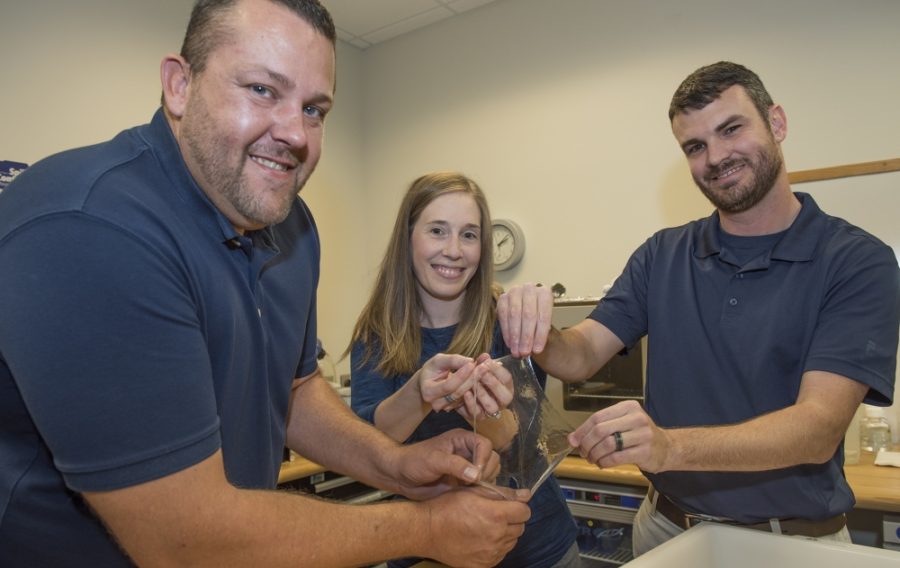
The US Navy has announced that a team of scientists and engineers at the at Naval Surface Warfare Center, Panama City Division, has synthetically recreated a biomaterial that can be used in military defence.
It is hoped that the material will be able to provide non-lethal and non-kinetic defence to the fleet.
The substance recreated is a synthetic component of hagfish slime. Pacific hagfish are bottom dwellers, which can secrete slime to protect themselves by obstructing the gills of predators. The substance developed by Biochemist Dr. Josh Kogot and Materials Engineer Dr. Ryan Kincer is expected to become invaluable to the Navy.

The alpha and gamma proteins of the Pacific hagfish have been used to create the biomaterial. Dr Ryan Kincer explained: “The coiled up thread behaves like a spring and quickly unravels upon contact with water due to stored energy,” said Kincer. “The mucin binds to water and constrains the flow between the micro channels created by the thread dispersion. The interaction between the thread, mucin, and seawater creates a three-dimensional, viscoelastic network. Over time, the thread begins to collapse on itself, causing the slime to slowly dissipate. Studies have shown the hagfish secretion can expand up to 10,000 times its initial volume.”
The research into the project has been encouraged through drive to replace synthetic products derived from petroleum-based precursors, with natural renewable materials. Comparing hagfish slime to spider silk, Kogot said the slime thread has comparable mechanical properties to Kevlar, a synthetic fiber used as a reinforcing agent for rubber products and protective gear.
“The synthetic hagfish slime may be used for ballistics protection, firefighting, anti-fouling, diver protection, or anti-shark spray,” said Kogot. “The possibilities are endless. Our goal is to produce a substance that can act as non-lethal and non-kinetic defense to protect the warfighter.”
“Researchers have called the hagfish slime one of the most unique biomaterials known,” said Kincer. “For the U.S. Navy to have its hands on it or a material that acts similar would be beneficial. From a tactical standpoint, it would be interesting to have a material that can change the properties of the water at dilute concentrations in a matter of seconds.”
Funded by Navy Innovative Science and Engineering (NISE) and the Office of Naval Research Code 32, the team is researching ways to increase the slime’s surface attachment capability, potential delivery systems, and enhanced stability in various environments.
This will lead to developing innovative applications and variations to the material.
If you would like to join our community and read more articles like this then please click here








